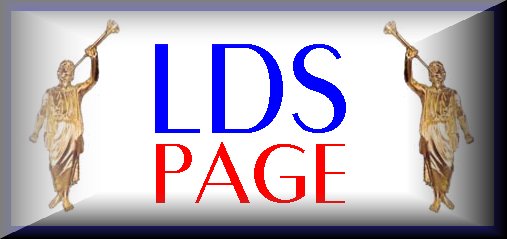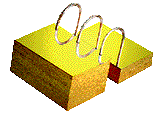RESOURCES
5-144000
A
B
C
D
E
F
G
H
I
J
K
L
M
N
O
P
Q
R
S
T
U
V
W
Y
Z
|
|
 NCCG's Guided Tour
NCCG's Guided Tour
2-2. The Book of Mormon
by Steven L. Shields
 The Book of Mormon is a very complex issue and is one that can not be considered too lightly. Time has come, though, that we must take seriously the facts surrounding the coming forth of this book. The Book of Mormon is a very complex issue and is one that can not be considered too lightly. Time has come, though, that we must take seriously the facts surrounding the coming forth of this book.
We know that discussions of the origin of the Native Americans was widespread in Joseph Smith's time and place; that Joseph was not the first to discover a stone box, metal plates or an "Indian Book", and that such discoveries encouraged the "persistent legend of a lost Indian Book; and that knowledge of the Maya and Inca civilizations was common place in the United States by 1830. Add to this fact that there were numerous discoveries of artifacts throughout New York and Ohio, and that the descriptions of Nephite fortifications in the Book of Mormon are strikingly similar to those in the Eastern United States. Ethan Smith in his View of the Hebrews believed that the Indian Book contained the Hebrew scriptures. And stone-peeping and treasure hunting were well within Joseph Smith's context, and early accounts surrounding the Book of Mormon describe the involvement of folk magic, etc. (Vogel, 1986, pp.11-14, 18-19, 21, 24-29, 31, 48).
Dan Vogel (1986, p.71) comes to the conclusion that "Those who claim Joseph Smith had no sources from which to take ideas have a limited knowledge of Joseph Smith's environment and the voluminous literature on the subject available to him", Vogel's summary of the Book of Mormon is reminiscent of Alexander Campbell's earlier description,
The Book of Mormon itself...claims to address its modern readers and their problems. As Nephi, a prophet who appears in the early chapter, says, "I know that they [i.e. his prophecies of the future] shall be of great worth unto them in the last days; for in that day shall they understand them" (2 Nephi 25:8). Most early American Freemasons could have guessed, for example, that the Book of Mormon was describing them when they read its condemnation of latter-day "secret combinations" (2 Nephi 26.22; Ether 8:23-26). Catholics may have winced when they read the Book of Mormon's typically Protestant description of the "great and abominable church...the whore of all the earth" (1 Nephi 13 and 14). And Universalists must have recognized their own beliefs in the "false and vail and foolish doctrines" of those teaching that "God will beat us with a few stripes, and at last we shall be saved in the kingdom of God" (2 Nephi 28:8). (Vogel, 1986, pp.5-6).
A recently published study by Edwin Firmage, Jr. (1992), sheds further light on the main idea of my proposition regarding the Book of Mormon. Firmage begins by explaining some of the problems with the historicity of the book and reaches a conclusion that the Book of Mormon is most likely not an ancient document. For this discussion, though, the most important element is Firmage's detailed analysis of the order in wjich the books of the Book of Mormon were most likely translated, or written, which helps to account for numerous textual puzzles. This essay is an excellent piece of scholarship and essentially supports my proposition. And since it is Firmage's paper, and not mine, you will have to find a copy and read it for yourselves. The following comments by Firmage will be helpful,
The key to this case is the fact that nowhere in the Book of Mormon's many detailed prophecies of the last days is anything ever said about the establishment of a new church in the latter days. The nature of God's latter-day work after the appearance of the Book of Mormon is very vague, strikingly so after the detailed prophecies pertaining to Joseph's involvement in the translation.
Not surprisingly, then, while Nephi forsees the rise of a "great and abominable" church following the apostolic era, he says nothing of the Great Apostacy as Mormons understand the term today, that is, the utter elimination of the legitimate church of God. By the same token, nothing is said of the Restoration, again in the global sense in LDS use today. The Book of Mormon portrays cases of apostacy in every era, as well as restorations. But these are localized events. Joseph Smith, as he is portrayed in the Book of Mormon, is not the prophet of the Restoration, but the translator of the Book of Mormon. He is a seer rather than first elder. Joseph's calling, as described in the Book of Mormon, is connected solely with the Book of Mormon.
Firmage goes on to suggest that plans to organize a church came in the final stages of the preparation of the Book of Mormomn manuscript. He remainds us that there is no evidence in Joseph's early diaries or even in his 1838 account of the First Vision and visits with Moroni that there was any suggestion of Joseph's rôle as a church leader. Manuscript evidence suggests that the first part of the Book of Mormon was composed after the final parts, and that chapters 1-6 and 8 of Moroni - the handbook - were intended for reforming existing religious institutions rather than forming the basis for a new church. This supports the early Campbellite efforts which were directed more toward reformation than separation (Campbell, 1809/1924; Hughes, 1988, p.224).
 


This page was created on 7 September 1999
Last updated on 9 March 2001
Copyright © 1997-2007 NCCG - All Rights Reserved
|
|

